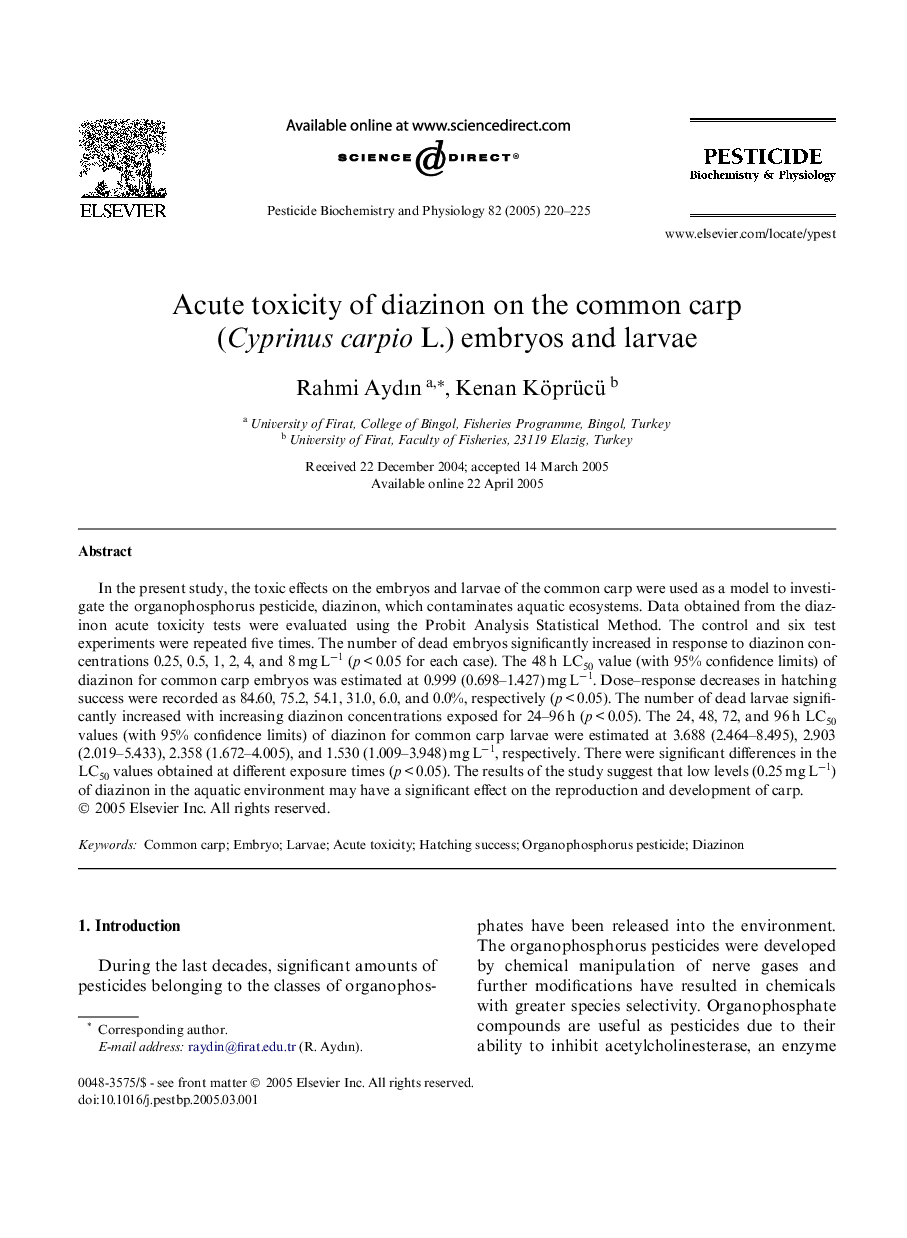| Article ID | Journal | Published Year | Pages | File Type |
|---|---|---|---|---|
| 10837482 | Pesticide Biochemistry and Physiology | 2005 | 6 Pages |
Abstract
In the present study, the toxic effects on the embryos and larvae of the common carp were used as a model to investigate the organophosphorus pesticide, diazinon, which contaminates aquatic ecosystems. Data obtained from the diazinon acute toxicity tests were evaluated using the Probit Analysis Statistical Method. The control and six test experiments were repeated five times. The number of dead embryos significantly increased in response to diazinon concentrations 0.25, 0.5, 1, 2, 4, and 8 mg Lâ1 (p < 0.05 for each case). The 48 h LC50 value (with 95% confidence limits) of diazinon for common carp embryos was estimated at 0.999 (0.698-1.427) mg Lâ1. Dose-response decreases in hatching success were recorded as 84.60, 75.2, 54.1, 31.0, 6.0, and 0.0%, respectively (p < 0.05). The number of dead larvae significantly increased with increasing diazinon concentrations exposed for 24-96 h (p < 0.05). The 24, 48, 72, and 96 h LC50 values (with 95% confidence limits) of diazinon for common carp larvae were estimated at 3.688 (2.464-8.495), 2.903 (2.019-5.433), 2.358 (1.672-4.005), and 1.530 (1.009-3.948) mg Lâ1, respectively. There were significant differences in the LC50 values obtained at different exposure times (p < 0.05). The results of the study suggest that low levels (0.25 mg Lâ1) of diazinon in the aquatic environment may have a significant effect on the reproduction and development of carp.
Related Topics
Life Sciences
Agricultural and Biological Sciences
Agronomy and Crop Science
Authors
Rahmi Aydın, Kenan Köprücü,
